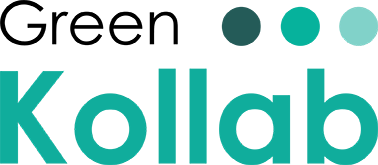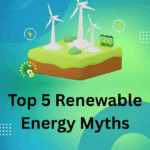Introduction
As the world is changing to sustainable energy, energy storage systems have become the supports for this transition. The consumption of fossil fuels is on the decline, and renewable energy like solar and wind power are stepping into the limelight. But as these forms of energy are intermittent in nature, their utilization becomes an issue. This is where renewable energy storage enters the scene to be the dependable labor force in the provision of reliable power.
In this blog, we will share the significance of energy storage, its use in renewable integration, and the future of energy storage in converting the world into a sustainable world.

What is Energy Storage?
It refers to the storage of energy when it is produced so that it can be used in the future. This ensures there is a proper balance between demand and supply, and thus the flow of power is constant though generation might not be constant. Energy storage solutions hold surplus energy produced from renewable sources and supply it when required, thus rendering renewable energy more efficient and reliable.
Importance of Energy Storage
- Grid Stability – Instability in the grid can happen due to variations in the supply of energy. By compensating for the variations in loads, renewable energy storage prevents power failures.
- Efficiency – Energy storage ensures that surplus energy generated by wind and solar is not wasted but stored to be used later.
- Cost Saving – Homes and companies can save electricity bills by saving energy at a low cost and utilizing it during peak demand.
- Carbon Footprint Reduction – Minimization of the use of fossil fuels by the effective utilization of renewable energy reduces carbon emissions.
Types of Energy Storage Solutions
1. Battery Energy Storage Systems (BESS)
Batteries are the most widely used energy storage solutions due to their efficiency and scalability. They fall into categories as:
- Lithium-ion Batteries – Lithium-ion batteries are used in electric vehicles and grid storage because of their high level of energy storage.
- Lead-acid Batteries– They are commonly used in the backup power systems and have a lower life span.
- Solid-state Batteries – New type balancing between greater safety and long life.
2. Pumped Hydro Storage
For grid balancing, pumped storage hydropower plays a vital role as a renewable solution. This is a mechanism of pumping of water into a higher elevation when there is no use of excess energy and then releasing the same energy through turbines to obtain electricity when required. It is already the most interesting stable means of renewable energy.
3. Compressed Air Energy Storage (CAES)
Compressed Air Energy Storage (CAES) accumulates energy in compressed air form in storage underground. The air is vented to power turbines when electricity is required. The process provides long-duration energy storage and is suitable for applications in grids.
4. Thermal Energy Storage
Energy is received in this technique by retaining heat in materials such as molten salt which may be utilized later to make steam and produce power. It is particularly useful in renewable energy integration for solar power plants.
5. Hydrogen Energy Storage
The excess electricity is used to produce hydrogen through the process of electrolysis. This stored hydrogen can be stored and then used later to produce energy, which is a proactive long-term energy storage.
Renewable Energy Integration: The Role of Storage
The success of renewable energy sources relies mostly on renewable energy integration, where the role of energy storage is central. This is how:
- Matching Supply with Demand – Storage systems help bridge the gap between peak generation and peak demand.
- Stabilizing the Grid – Renewable energy storage helps in frequency regulation and voltage control.
- Facilitating Decentralized Energy Systems – With better storage, localized microgrids can function independently.
- Enhancing Energy Accessibility – In remote areas, stored renewable energy ensures uninterrupted power supply.
The Future of Energy Storage
1. Advancements in Battery Technology
- Solid-state Batteries – Expected to revolutionize the market with higher efficiency and longevity.
- Recycling and Second-life Batteries – Efforts are being made to reduce e-waste and repurpose used batteries.
- Sodium-ion Batteries – A cost-effective and abundant alternative to lithium-ion batteries.
2. Grid-scale Storage Expansion
Governments worldwide are investing in renewable energy storage projects, enhancing grid reliability and ensuring large-scale energy stability.
3. AI and Smart Energy Management
Machine learning and Artificial Intelligence ( AI ) will maximize the energy storage functions as it will forecast demand behaviour and enhance energy efficiency.
4. Hydrogen as a Game-Changer
Hydrogen storage is being recognized as a viable option for long-term energy storage solutions, with increased investment in green hydrogen production.
Conclusion
Energy storage has a promising future because of its quick development, which is opening the door to a sustainable energy environment. Unlocking the full potential of renewable energy sources requires creative solutions for energy storage, from batteries to hydrogen storage. Investing in energy storage solutions will be essential to securing a robust and dependable energy future as the globe transitions to greener energy systems.
Renewable energy would be a far better option once energy storage was incorporated into global power grids, giving future generations a more practical, sustainable, and clean world. Energy storage, whether for residential, commercial, or grid applications, is the engine powering the revolution in renewable energy.
Frequently Asked Questions (FAQs)
Energy storage solutions help mitigate the intermittent nature of renewable energy by storing excess power and releasing it when needed, ensuring grid stability and reliability.
The best technology depends on the application. Lithium-ion batteries are ideal for short-term storage, while pumped hydro storage is preferred for large-scale energy retention.
Yes, energy storage allows users to store electricity when prices are low and use it during peak demand, reducing overall costs.
By improving the efficiency of renewable energy usage, energy storage solutions reduce reliance on fossil fuels and lower greenhouse gas emissions.
The future of energy storage lies in advanced battery technologies, grid-scale storage, AI-driven energy management, and hydrogen storage.












